Omron BP7100 User Manual
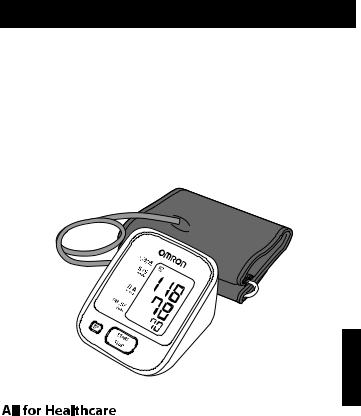



 ®
®
INSTRUCTION MANUAL
3 series Upper Arm Blood Pressure Monitor
Model BP7100
ENGLISH

|
Table of Contents |
|
Introduction .................................................................................................. |
3 |
|
Important Safety Information........................................................................ |
4 |
|
1. |
Know Your Monitor ................................................................................ |
8 |
2. |
Preparation .......................................................................................... |
13 |
3. |
Using the Monitor................................................................................. |
14 |
4. |
Error Messages and Troubleshooting.................................................. |
20 |
5. |
Maintenance ........................................................................................ |
23 |
6. |
Specifications....................................................................................... |
25 |
7. |
FCC Statement .................................................................................... |
27 |
8. |
Limited Warranty.................................................................................. |
28 |
9. |
Guidance and Manufacturer’s Declaration........................................... |
30 |
2
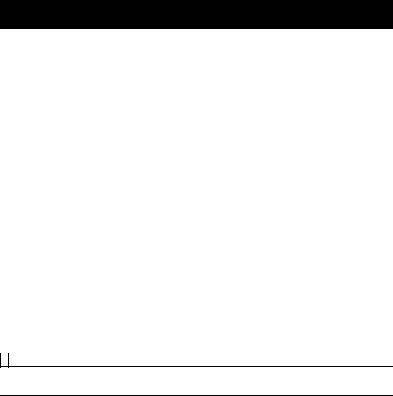
Introduction
Thank you for purchasing the OMRON BP7100 Blood Pressure Monitor. This new blood pressure monitor uses the oscillometric method of blood pressure measurement. This means this monitor detects your blood movement through your brachial artery and converts the movements into a digital reading.
Safety Instructions
This instruction manual provides you with important information about the OMRON BP7100 Blood Pressure Monitor. To ensure the safe and proper use of this monitor, READ and UNDERSTAND all of these instructions. If you do not understand these instructions or have any questions, contact 1-800-634-4350 before attempting to use this monitor. For specific information about your own blood pressure, consult with your physician.
Intended Use
This device is a digital monitor intended for use in measuring blood pressure and pulse rate in adult patient population. The device detects the appearance of irregular heartbeats during measurement and gives a warning signal with readings.
Environments of Use: Home Patient Population: Adult
Receiving and Inspection
Remove this monitor from the packaging and inspect for damage. If this monitor is damaged, DO NOT USE and contact 1-800-634-4350.
Symbols Glossary
For symbol information, visit: OmronHealthcare.com/symbols-glossary
 Contraindications
Contraindications
•This monitor is contraindicated for use in ambulatory environments.
•This monitor is contraindicated for use on aircraft.
3

Important Safety Information
Please read the Important Safety Information in this instruction manual before using this monitor.
Please follow this instruction manual thoroughly for your safety.
Please keep for future reference. For specific information about your own blood pressure, CONSULT WITH YOUR PHYSICIAN.
|
Warning |
Indicates a potentially hazardous situation which, if not |
|
avoided, could result in death or serious injury. |
|
|
|
|
|
|
|
•DO NOT use this monitor on infants, toddlers, children or persons who cannot express themselves.
•DO NOT adjust medication based on readings from this blood pressure monitor. Take medication as prescribed by your physician. ONLY a physician is qualified to diagnose and treat high blood pressure.
•DO NOT use this monitor on an injured arm or an arm under medical treatment.
•DO NOT apply the arm cuff on your arm while on an intravenous drip or blood transfusion.
•DO NOT use this monitor in areas containing high frequency (HF) surgical equipment, magnetic resonance imaging (MRI) equipment, computerized tomography (CT) scanners or in oxygen rich environments. This may result in incorrect operation of the monitor and/or cause an inaccurate reading.
•Consult with your physician before using this monitor if you have common arrhythmias such as atrial or ventricular premature beats or atrial fibrillation; arterial sclerosis; poor perfusion; diabetes; pregnancy; pre-eclampsia or renal disease. NOTE that any of these conditions in addition to patient motion, trembling, or shivering may affect the measurement reading.
•NEVER diagnose or treat yourself based on your readings. ALWAYS consult with your physician.
•To help avoid strangulation, keep the air tube away from infants, toddlers or children.
•This product contains small parts that may cause a choking hazard if swallowed by infants, toddlers or children.
4

Battery Handling and Usage
• Keep batteries out of the reach of infants, toddlers or children.
Indicates a potentially hazardous situation which, if not
avoided, may result in minor or moderate injury to the user  Caution or patient, or cause damage to the equipment or other
Caution or patient, or cause damage to the equipment or other
property.
•Stop using this monitor and consult with your physician if you experience skin irritation or discomfort.
•Consult with your physician before using this monitor on an arm where intravascular access or therapy, or an arteriovenous (A-V) shunt, is present because of temporary interference to blood flow which could result in injury.
•Consult with your physician before using this monitor if you have had a mastectomy.
•Consult with your physician before using this monitor if you have severe blood flow problems or blood disorders as cuff inflation can cause bruising.
•DO NOT take measurements more often than necessary because bruising, due to blood flow interference, may occur.
•ONLY inflate the arm cuff when it is applied on your upper arm.
•Remove the arm cuff if it does not start deflating during a measurement.
•DO NOT use this monitor for any purpose other than measuring blood pressure.
•Do not use a mobile phone or other devices that emit electromagnetic fields, near the monitor. This may result in incorrect operation of the monitor.
•DO NOT disassemble or attempt to repair this monitor or other components. This may cause an inaccurate reading.
•DO NOT use in a location where there is moisture or a risk of water splashing this monitor. This may damage this monitor.
•DO NOT use this monitor in a moving vehicle such as in a car.
•DO NOT drop or subject this monitor to strong shocks or vibrations.
•DO NOT use this monitor in places with high or low humidity or high or low temperatures. Refer to section 5.
•Ensure this monitor is not impairing blood circulation by observing the arm while measurement is occurring.
5
•DO NOT use this monitor in high-use environments such as medical clinics or physician offices.
•DO NOT use this monitor with other medical electrical (ME) equipment simultaneously. This may result in incorrect operation of the monitor and/or cause an inaccurate reading.
•Avoid bathing, drinking alcohol or caffeine, smoking, exercising and eating for at least 30 minutes before taking a measurement.
•Rest for at least 5 minutes before taking a measurement.
•Remove tight-fitting, thick clothing from your arm while taking a measurement.
•Remain still and DO NOT talk while taking a measurement.
•ONLY use the arm cuff on persons whose arm circumference is within the specified range of the cuff.
•Ensure that this monitor has acclimated to room temperature before taking a measurement. Taking a measurement after an extreme temperature change could lead to an inaccurate reading. OMRON recommends waiting for approximately 2 hours for the monitor to warm up or cool down when the monitor is used in an environment within the temperature specified as operating conditions after it is stored either at the maximum or at the minimum storage temperature. For additional information of operating and storage/transport temperature, refer to section 5.
•DO NOT crease the arm cuff or the air tube excessively.
•DO NOT fold or kink the air tube while taking a measurement. This may cause an injury by interrupting air flow.
•To unplug the air plug, pull on the plastic air plug at the base of the tube, not the tube itself.
•ONLY use the arm cuff, batteries and accessories specified for this monitor. Use of unsupported arm cuffs and batteries may damage and/or may be hazardous to this monitor.
•ONLY use the approved arm cuff for this monitor. Use of other arm cuffs may result in incorrect readings.
•Inflating to a higher pressure than necessary may result in bruising of the arm where the cuff is applied. NOTE: please refer to “If your systolic pressure is more than 210 mmHg” in section 3 of this instruction manual for additional information.
•Read and follow the “Important information regarding Electromagnetic Compatibility (EMC)” in section 9 of this manual.
6
Battery Handling and Usage
•DO NOT insert batteries with their polarities incorrectly aligned.
•ONLY use 4 “AA” alkaline or manganese batteries with this monitor. DO NOT use other types of batteries. DO NOT use new and used batteries together.
•Remove batteries if this monitor will not be used for a long period of time.
•If battery fluid should get in your eyes, immediately rinse with plenty of clean water. Consult with your physician immediately.
•If battery fluid should get on your skin, wash your skin immediately with plenty of clean, lukewarm water. If irritation, injury or pain persists, consult with your physician.
•DO NOT use batteries after their expiration date.
•Periodically check batteries to ensure they are in good working condition.
7
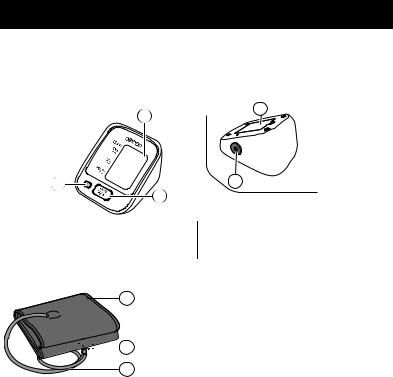
1. Know Your Monitor
Contents:
Monitor, arm cuff, instruction manual, quick start guide
Monitor:
A D
|
C |
B |
E |
|
|
|
|
A. |
Display |
D. |
Battery compartment |
B. |
START/STOP button |
E. |
Air jack |
C. |
Memory button |
|
|
Arm cuff:
F
 G H
G H
F.Arm cuff
(Arm circumference 9" - 17" (22 - 42 cm))
G.Air plug
H.Air tube
8
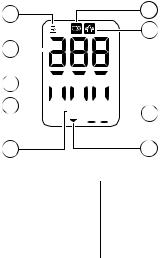
Display:
I |
N |
|
O |
J |
|
K





L





 P
P
M Q
I.Memory symbol
J.Systolic blood pressure
K.Diastolic blood pressure
L.Low battery symbol
M.Heartbeat symbol
(Flashes during measurement.)
N.Irregular heartbeat symbol
O.Movement error symbol
P.Pulse display / Memory number
Q.Deflation symbol
9
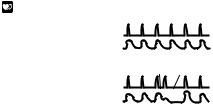
1.1 Display symbols
Irregular Heartbeat Symbol ( )
)
When the monitor detects an irregular rhythm two or more times during the measurement, the irregular heartbeat symbol will appear on the display with the measurement values. An irregular heartbeat rhythm is defined as a rhythm that is 25% less or 25% more than the average rhythm detected while the monitor is measuring the systolic and diastolic blood pressure.
If the irregular heartbeat symbol displays with your measurement results, we recommend you consult your physician. Follow the directions of your physician.
10

Movement Error Symbol (  )
)
The movement error symbol is displayed if you move your body during the measurement. Please remove the arm cuff, and wait 2 - 3 minutes.
Take another measurement, remain still during measurement.
Classification of BP (Blood Pressure)
ACC/AHA 2017 Hypertension guidelines define categories of BP in adults as below.
Categories of BP in Adults*
BP Category |
Systolic BP |
|
|
Diastolic BP |
Normal |
< 120 mmHg |
and |
< 80 mmHg |
|
|
|
|
|
|
Elevated |
120-129 mmHg |
and |
< 80 mmHg |
|
|
|
|
|
|
Hypertension |
|
|
|
80-89 mmHg |
Stage 1 |
130-139 mmHg |
or |
||
Stage 2 |
≥ 140 mmHg |
or |
≥ 90 mmHg |
|
*Individuals with Systolic BP and Diastolic BP in 2 categories should be designated to the higher BP category.
BP indicates blood pressure (based on an average of ≥ 2 careful readings obtained on ≥ 2 occasions).
Source: ACC/AHA 2017 High Blood Pressure Clinical Practice Guideline
|
Warning |
NEVER diagnose or treat yourself based on your |
|
readings. ALWAYS consult with your physician. |
|
|
|
11
